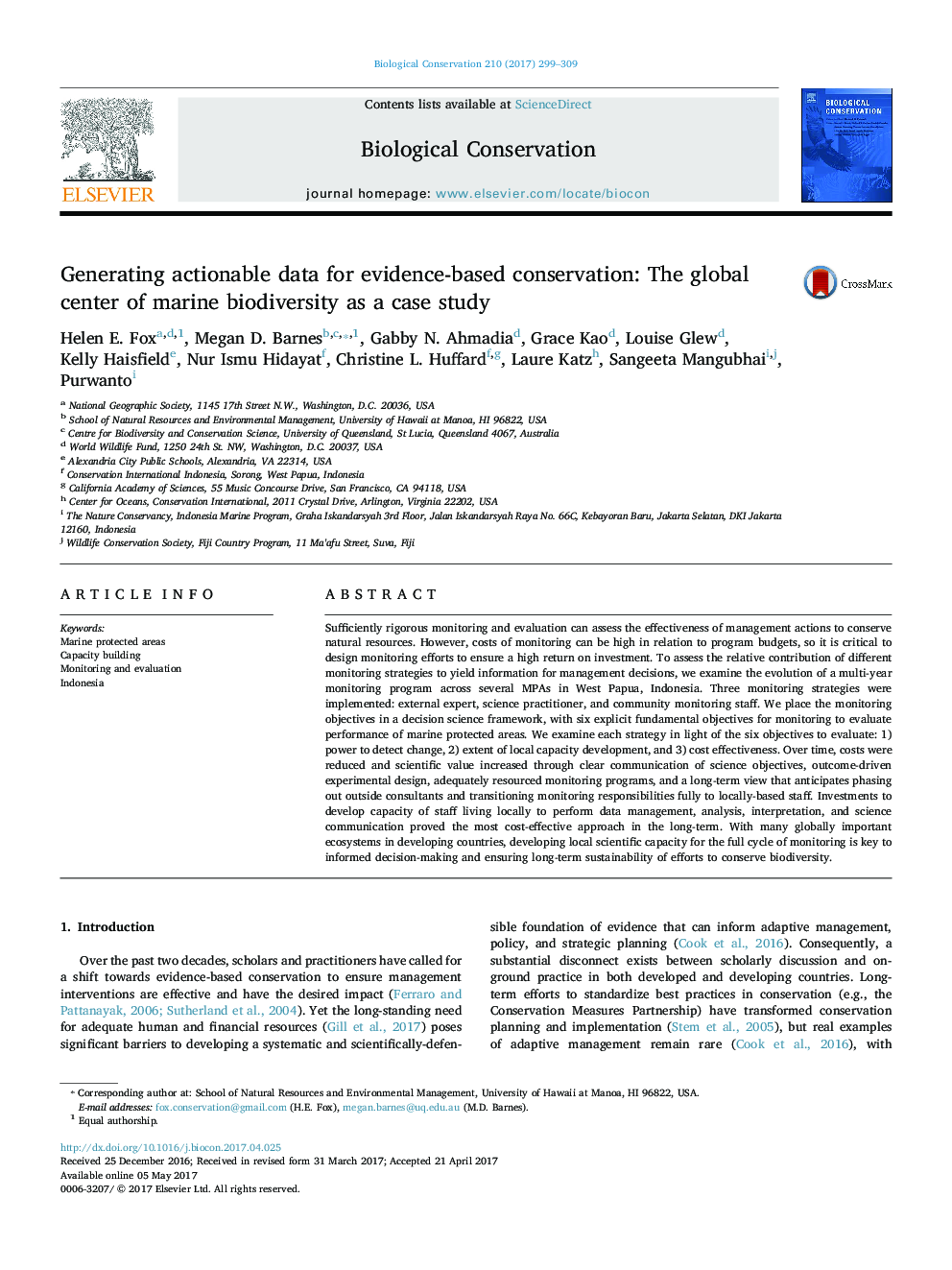| کد مقاله | کد نشریه | سال انتشار | مقاله انگلیسی | نسخه تمام متن |
|---|---|---|---|---|
| 5743227 | 1412300 | 2017 | 11 صفحه PDF | دانلود رایگان |
- Different monitoring strategies led to tradeoffs with no single “best” strategy.
- Tradeoffs include statistical power, time to detect change, local capacity development, and cost.
- Developing community monitoring and evaluation capacity requires a large initial investment.
- Over the long term, community monitoring is the most cost effective approach.
- An integrated multi-year strategy should prioritize baseline collection alongside training.
Sufficiently rigorous monitoring and evaluation can assess the effectiveness of management actions to conserve natural resources. However, costs of monitoring can be high in relation to program budgets, so it is critical to design monitoring efforts to ensure a high return on investment. To assess the relative contribution of different monitoring strategies to yield information for management decisions, we examine the evolution of a multi-year monitoring program across several MPAs in West Papua, Indonesia. Three monitoring strategies were implemented: external expert, science practitioner, and community monitoring staff. We place the monitoring objectives in a decision science framework, with six explicit fundamental objectives for monitoring to evaluate performance of marine protected areas. We examine each strategy in light of the six objectives to evaluate: 1) power to detect change, 2) extent of local capacity development, and 3) cost effectiveness. Over time, costs were reduced and scientific value increased through clear communication of science objectives, outcome-driven experimental design, adequately resourced monitoring programs, and a long-term view that anticipates phasing out outside consultants and transitioning monitoring responsibilities fully to locally-based staff. Investments to develop capacity of staff living locally to perform data management, analysis, interpretation, and science communication proved the most cost-effective approach in the long-term. With many globally important ecosystems in developing countries, developing local scientific capacity for the full cycle of monitoring is key to informed decision-making and ensuring long-term sustainability of efforts to conserve biodiversity.
Journal: Biological Conservation - Volume 210, Part A, June 2017, Pages 299-309
